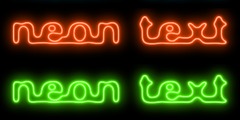On Sun, Aug 5, 2012 at 5:13 AM, Anatol Chavez wrote:
To Whom it May Concern:
I am a freelance writer submitting a review to microfilmmaker.com for
consideration. My review has been approved for publication in the August
issue, pending fact checking by one of the members of the GIMP team. I would
like to request for a GIMP team member to review this article so that we can
post it this month.
Thanks so much for your consideration and I look forward to your response.
GIMP is an open source alternative to Adobe PhotoShop
It's "Photoshop", not "PhotoShop" (same for other occurrences)
The software can work with all kinds of images, be it ... fonts...
What exactly did you mean with that?
The GIMP toolbox, for example, is basically filled with standard photoshop icons, such as the lasso, wand, magnifying glasss, text, stamp, blur, and eraser tool.
This is incorrect. There is nothing photoshopish about these icons.
Those are widely adopted metaphors.
...GIMP was able to open raw photo files from both Canon (CR2), Nikon (NEF), and PhotoShop (DNG),
Only if UFRaw is installed along with GIMP, which isn't always the case.
Versions as late as PhotoShop CS4 had issues with reading newer versions of both Canon and Nikon raw files, and could require a codec installation.
UFRaw hasn't updated in a long time, so files from newer cameras are
likely to not open. Comparing to CS4 would be incorrect, as there
already is CS6 available.
There is a plugin called separate+ that allows some CMYK access,
This can be limiting if you are hoping to utilize GIMP for poster or DVD art
You can do original art and produce color separated TIFF file from
GIMP via separate+.
For example, I can choose Multiply for a text layer and it will become semi-transparent, making the darker areas of the underlying image darker through the text layer.
It won't. Please just check it :) And the result also depends on the
color of the text. All in all, I wouldn't say it's a very good
example.
The filter tab
The menu, you mean?
Although GIMP has the added value of having the undo option (control-z) go back as far as your computer memory allows (which Photoshop does not, by default, have)
Doesn't Ctrl/Command+Alt+Z do the trick on Photoshop by default?
Alexandre Prokoudine
http://libregraphicsworld.org
gimp-developer-list mailing list
gimp-developer-list@gnome.org
https://mail.gnome.org/mailman/listinfo/gimp-developer-list











